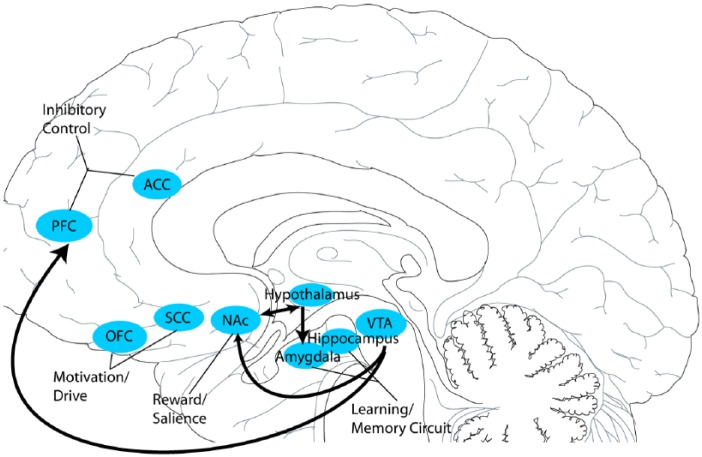Figure 1.
Reward pathways and interactions. This schematic illustrates the hypothalamic–mesocorticolimbic pathways and potential anatomical targets involved with reward, cognitive control, motivation and the learning/memory circuits. Reward and saliency involve the ventral tegmental area, nucleus accumbens and caudate. The orbitofrontal cortex and subgenual cingulate cortex are thought to be involved in motivation and drive. The learning/memory circuit, which includes the amygdala, hippocampus and putamen, are also components in eating neurobiology. Inhibitory control has been known to involve the dorsolateral prefrontal cortex, ventromedial prefrontal cortex, and the anterior cingulate cortex. The arrows signify the direction of signal transmission.
ACC, anterior cingulate cortex; NAc, nucleus accumbens; OFC, orbitofrontal cortex; PFC, prefrontal cortex; SCC, subgenual cingulate cortex; VTA, ventral tegmental area.

